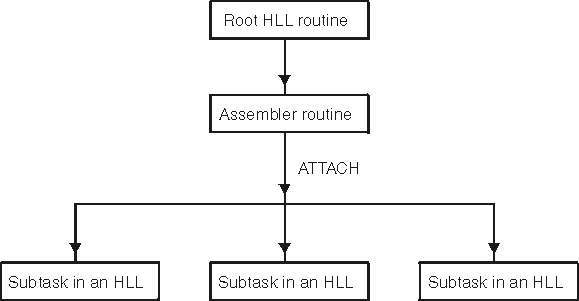Using the ATTACH macro
Figure 1 illustrates the concept of performing an OS ATTACH to a C, C++, nonmultitasking PL/I, or COBOL program, and thus establishing a separate Language Environment runtime environment. For each ATTACH to a Language Environment-conforming routine, another Language Environment runtime environment is added to the MVS™ address space. In COBOL, this is called multitasking; COBOL RES multitasking is supported only when all of the COBOL programs are compiled with Enterprise COBOL for z/OS, COBOL for OS/390 & VM, COBOL for MVS & VM, or COBOL/370 (not with OS/VS COBOL or VS COBOL II).

When running with POSIX(ON), use the POSIX function pthread_create in place of OS ATTACH to create a new thread.
Currently, each Language Environment environment supports one process. Within the process each enclave supports a single thread.
- Whether you are using POSIX(ON) in a multithread environment. You must not use the ATTACH macro in this case. If you are running a PL/I multitasking application, you cannot use the ATTACH macro.
- Whether the Language Environment environments share any resources.
- The MVS affinity aspects of each routine. For example, if you OPEN a file in one TCB, you must CLOSE it in the same TCB.
- The concurrency aspects of each routine. For example, you must ensure that two routines do not attempt to make contradictory or destructive changes to a data base.
- The termination order of all routines, particularly those in a new Language Environment environment.
- The compiler options and link-edit options when using COBOL.